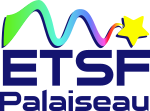| Author | |
|---|---|
| Abstract |
In this thesis, collective excitations of carbon systems with different dimensionality have been studied both theoretically and numerically. First, a method combining effective medium theory and ab-initio calculations has been developed which allows to describe the collective excitations of nanostructures (like carbon nanotubes) starting from the polarisability of their building blocks (graphene). In contrast to standard dielectric theory, the Maxwell equations are solved for the full frequency- and momentum-dependent microscopic dielectric function ε(q,q ,ω) of the bulk material. The latter is calculated from first-principles within the Random Phase Approximation. Second, this method has been applied to calculate electron-energy loss spectra (EELS) for graphene and single-wall carbon nanotubes (SWCNT). The results are in good agreement with full ab-initio calculations of these systems and corresponding experiments. The linear dispersion of the π plasmon in graphene and SWCNTs has been analysed and explained. The directional dependence of the electron energy-loss spectra of SWCNTs is understood in terms of its normal mode excitations. Third, the use of ab-initio calculations for the prediction of spatially-resolved EELS is discussed. Therefore, the mixed dynamic form factor has been studied and a discontinuous behavior at certain Bragg reflections is predicted. This effect has been explained in terms of crystal local field effects and verified by IXS experiments on graphite and silicon. Finally, the building block approach is applied for spatially-resolved EELS. |
| Year of Publication |
2010
|
| Conference Name |
Ecole Polytechnique, PhD Defence
|
| Date Published |
11/19
|
| Presentation file |
201011_Soutenance_Hambach.pdf
(3.99 MB)
|
| Download citation |
Collective Excitations in Nanostructures: Towards Spatially-Resolved EELS from First Principles
Developed & Designed by Alaa Haddad. Customized by ETSF Palaiseau © 2025.
